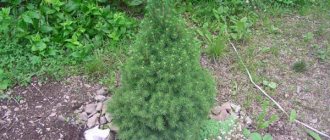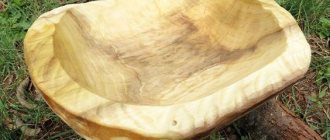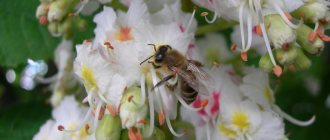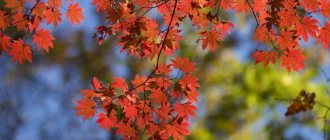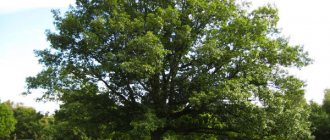Amur velvet is a relict plant growing in the Far East. Leaves, berries, and especially the bark have long been valued, for which the crop is even called the cork tree. Its parts are actively used by eastern medicine (Chinese, Korean) as a basis for the preparation of all kinds of medicinal potions. Growing Amur velvet is also possible on a personal plot; the tree will not only become a source of useful substances, but will also decorate the surrounding landscape.
Amur velvet: a guest from prehistoric times
A plant with such a melodious name is an ancient representative of the subtropical flora of the era of the first people. The tree, which survived the Ice Age, is considered a natural monument to the vegetation of those times. Looking at the Amur velvet, we can roughly imagine what our planet looked like millions of years ago.
An adult tree reaches 26-29 meters in height, famous for its attractive openwork crown and dense foliage that looks like feathers. Its silver-gray wrinkled bark, soft and corky, resembles rough matter upon tactile contact.
It is of particular value due to its numerous medicinal properties, as well as its thick cork layer and high-quality wood. It copes well with the role of a honey plant: honey collected during its flowering period has strong anti-tuberculosis properties.
Place of growth
The tree grows alone or in small groups. In our country, it is widespread in Sakhalin, the Kuril Islands, the Khabarovsk Territory, and the Far East. It also grows in other countries ─ Japan, Korea, China.
Velvet prefers hills, mountain slopes no higher than seven hundred meters above sea level, and deciduous forests. This is a relict plant, considered a living natural monument. The history of its appearance comes down to the Ice Age. Cultivated specimens have now begun to be imported and bred in new territories ─ in Asia, America, Europe, and the Caucasus.
Features of cultivation, planting and care
This is a light-loving plant, which at a young age requires abundant watering and annual fertilizing (in the spring). However, the tree can tolerate shade, drought, strong winds, and easily takes root in fertile, moist soil with good drainage. It has an extensive and strong root system and practically does not suffer during transplants.
Amur velvet is quite unpretentious in care - it patiently tolerates the smog of city neighborhoods, so it often grows in the parks of megacities. The older the plant, the greater its winter hardiness. A tree can live as long as a turtle - up to three hundred years.
The best and, in fact, the only sure way to propagate a plant is before winter, with fresh, barely collected seeds. When harvested before spring, they undergo three months of stratification, and after planting, seedlings can wait up to a year. You can contact a company that provides services for planting and caring for plants; you can read more here.
Reproduction
You can grow Amur velvet in one of two ways:
- From seeds - planting material is collected in the fall and stored for 3 months in a cool, ventilated room. If the seeds are not stratified, then before planting in the ground they must be soaked for several days, filled with hot water. Seeds are planted in open ground or in a prepared soil mixture (garden soil, humus, peat) with a depth of 3-5 cm. During the first two years of growth, seedlings must be constantly watered and provided with food, loosen the soil, and remove weeds. In winter, the tree trunks must be mulched and the shoots covered with breathable material.
- Cuttings - planting material is cut from the mother plant in early June or late May. In order for the shoots to take root, they need to be buried for several days in well-moistened soil. If desired, you can use a root stimulator.
Propagating Amur velvet by cuttings is much less troublesome than by seeds, so this method is recommended for beginning gardeners. Moreover, it is easier to control the sex of the plant. If the shoots were taken from a female tree, then all clones will be the same, and vice versa.
Amur velvet in landscape design
The plant is not considered particularly decorative: the greenish inflorescences do not attract the attention of tourists and neighboring gardeners. At the same time, the spreading carved crown provides good shade, and the strong fleshy trunk becomes an effective landscape dominant.
Designers willingly use Amur velvet in landscaping parks and walking trails. With proper pruning, you can form a luxurious branchy tree, reminiscent of pictures from children's fairy tales.
In landscape design, Amur velvet is successfully combined with low-growing coniferous companions - juniper and thuja. Spectacular images are created by proximity to bright varieties of barberry and maple.
With proper freedom, the plants turn out to be large, strong and spreading, so when planting they are placed no more often than four meters apart.
Flowers and fruits of Amur velvet
Flowering does not begin immediately, but only in the 18-19th year of the life cycle. It is even rarer to come across black and inedible berries of Amur velvet - the tree bears fruit, at best, once every five years. Their resinous aroma can hardly be called pleasant, the taste is bitterish - even more so, but the berries have found diverse uses in medicine.
They hang in strong clusters of dark pearls until mid-September (less often until the coldest weather). The decline is happening rapidly.
In a good season, one Amur velvet tree can produce up to 8-10 kilograms of berries. To prepare them for medicinal purposes, the ripened fruits are dried in the open air. Then they are stored in a place where dryness and darkness reign.
Spreading
It grows over a vast territory of the Far East (Khabarovsk Territory, Amur Region, Sakhalin, Kuril Islands, Primorye). Under natural conditions, Amur velvet is found in the forests of Japan, China and Korea. Decorative cultivation is practiced in different countries, where plants can be found as decorations in parks, gardens, and public gardens.
In China, Amur velvet is called “black pearl tree”. This name is associated with a legend according to which the emperor once dropped a black pearl while walking. Over time, it took root and grew into a beautiful tree, the berries of which still remind of the ruler’s lost decoration.
Velvet loves plenty of sunlight and high humidity. At the same time, drought is almost not scary for him. Prefers loamy soils; it will not grow on sandy soils.
Amur velvet: medicinal properties
Ancient Chinese medicine has long recognized Amur velvet as having a number of medicinal capabilities. Most often, preparations made from its berries and the whole fruit are used for treatment:
- Cystitis and urinary tract diseases
- Colds (including flu)
- Respiratory tract diseases (tuberculosis, pneumonia)
- Diabetes mellitus
Among other things, Amur velvet helps restore metabolism and alleviates hypertension. Black berries are also effective for preventing illnesses (two or three fruits are enough to provide immunity for the whole day).
Procurement of raw materials
For the manufacture of medicines they use:
- The fruits are collected after full ripening, then they are kept under ultraviolet light and dried in the fresh air under canopies. The finished material is transferred into containers, tightly sealed, and sent to darkened rooms for permanent storage.
- Leaves – harvesting requires dry and sunny weather and is carried out in July/June. Before drying, the tails are removed, the material is laid out on paper in thin layers. When drying, the collection is not exposed to the sun.
- Bark - collected in spring days and dried in the standard way.
The maximum shelf life of finished raw materials is 1 year.
Beneficial properties of bark and leaves
In folk medicine, they practice the use of both fruits and bark, subbark (bast) and leaves of Amur velvet. The odd-pinnate leaves of phellodendron are rich in bioflavonoids, essential oils and vitamins. The composition is rich in phytoncides and tannins. Rubbing the leaves in your hand, you will feel a specific aroma that cannot be confused with anything else.
Preparations prepared from bast, leaves and bark are considered effective tonic, antipyretic, antimicrobial, anthelmintic, and anti-inflammatory agents. They are able to reduce blood pressure in hypertensive patients, stop bleeding, and are also an effective prevention of cancer. Decoctions and infusions of the bark help with pneumonia, nephritis, diabetes and skin diseases.
Chemical characteristics
Amur velvet is enriched with various elements:
- in the root system - berberine, fellodedrine, jatroricin, cardicin, palmatine, guanine, magnoflorine, coumarin and nitrogen-containing components;
- wood - berberine;
- bark - beta-sitosterol, gammasitosterol, 7-dehydrostigmasterol, campesterol, alkaloids (berberine, jatroricin, palmatine, magnoflorine, phellodendrin, candicin, candiene), ferulic and phenolcarbolic acid, diosmin;
- lubka - carbohydrate elements, mucus, polysaccharides, antioxidants, coumarins, up to 16-18% - phenolic compounds;
- leaves - essential oil, ascorbic acid and rutin, tannins, fellamurin, amurensin, fellamuretin, diosmin, phellodendroside, fellavin (from 3.1 to 5.2%), fellatin, noricarizide, phelloside, dihydrofelloside (flavonoids);
- Amur velvet fruits - carbohydrates, essential oils (up to 8%), myrcene, limonin, geraniol, coumarins, saponins, tannins, diosmin, berberine, jatroricin, palmatine (alkaloids).
The flowers of the plant contain alkaloid elements and diosmin.
Possible harm of Amur velvet and contraindications
Amur velvet is not so harmless: eating the fruit in large quantities (over 5 pieces) can lead to an unexpected reaction in the body. Infusions from the leaves and berries of the plant are contraindicated:
- school-age children and preschoolers
- pregnant women
- nursing ladies
- for allergy sufferers
It is undesirable for those who enjoy smoking and drinking alcohol to “feast” on the fruits. During treatment with Amur velvet berries, you should not drink strong brewed tea, alcohol or coffee, or inhale tobacco smoke.
Amur velvet - honey plant
The plant is dioecious, so the trees are considered “unisexual.” Each specimen of Amur velvet can have either male or female inflorescences. Bees are their faithful companions in matters of pollination. Abundant fragrant flowering attracts a swarm of bees, and large reserves of nectar force them to make a long stop.
Amur velvet honey can also be used for medicinal purposes - it is slightly greenish, with a pleasant taste and characteristic odor. Unique in its composition, it is used in the treatment of, for example, tuberculosis. Distinctive features of this honey are a modest amount of glucose, long-term storage of the product and a reluctance to crystallize.
Landing
Growing phellodendron is a painstaking and meticulous process because it extends over time. To successfully grow it, certain conditions must be met. First of all, this is the right place to plant the tree. Since the breed is light-loving, the area should be well lit or at least with partial shade. Shaded places are extremely undesirable. The soil needs to be slightly acidic, moist and fertile. Sand is absolutely not suitable. Stagnation of groundwater is unacceptable. The right time of year is early spring, when the earth has already warmed up a little.
Important rules:
- When planting, it is important to consider the lifespan of Amur velvet and its future size. There should be no buildings or communications nearby.
- Planting is carried out with grown seedlings. It is best if these are mature, six-year-old plants. They can be purchased in specialized stores. Since they tolerate transplantation well, they very soon take root in a new area.
- Planting is carried out in autumn or spring.
- If several trees are planted, then an interval of at least 5 meters should be maintained between them. Each specimen requires this space for a comfortable existence.
Algorithm of actions:
- Preparing a planting hole. Its dimensions should exceed the size of the root system of a young plant by a third.
- If the soil has increased density, then a drainage layer consisting of crushed bricks should be laid in the hole.
- Sprinkle the nutrient mixture on top. Suitable composition: turf soil, humus, river sand.
- Spread the roots, place the seedling, sprinkle with soil.
- Provide the plant with abundant watering. Pour a bucket of water under each specimen. Under no circumstances should the soil dry out for the first five or six days. The best option is to carry out the planting procedure in rainy weather.
- Mulching the soil with dry grass, tree bark, sawdust, sunflower husks.
Amur velvet wood
The picturesque name of the plant is clearly emphasized by its unusual bark: on the outside it is velvety to the touch. It is often used in production as a replacement for cork oak bark.
Light and durable Amur velvet wood is characterized by a spectacular dark yellow color and an expressive cut (both longitudinal and oblique) with beautiful stains and a charismatic pattern. Furniture makers fell in love with it because it practically does not rot and is not a favorite food for insects. The structure of valuable wood resembles noble ash, but the shade is much darker.
Experts readily use Amur velvet in the production of furniture, baguettes, veneer panels and plywood. The wood does not dry out, does not warp and is easily polished, and with careful processing it gives a charming silky shine.
Amur velvet: application on the farm
Amur velvet is an excellent cork plant. In an adult plant, the cork layer can be 5 centimeters or more thick. The bark can be easily cut away without damaging the wood or causing damage to the tree itself. Amur velvet cork is environmentally friendly, pliable, moisture resistant and retains its original color and aroma when in contact with food.
The voluminous and quickly renewable cork layer, which Amur velvet is rich in, is widely used on the farm. It is used in thermal insulation and in shipbuilding, in the manufacture of fishing gear, helmets, life jackets and wine stoppers. Its shavings and crumbs are used in the production of linoleum.
An impressive plant that can become a majestic dominant of a home landscape can be bought at a garden store.
